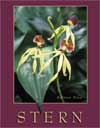1. The theory of organic evolution received its greatest impetus from
Charles Darwin's On the Origin of Species. 2. Before 1900, many biologists, notably Lamarck, believed that organic
evolution occurred as a result of the inheritance of acquired characteristics.
This theory was discredited experimentally. 3. Evidence in support of organic evolution is drawn from fossils and
from the form, ecology, geographical distributions, and relationships of living
organisms, homologies, molecular structures, and analogies such as succulent
form in deserts. 4. Darwin's natural selection theory is based on four principles: (1)
overproduction; (2) struggle for existence; (3) variation and inheritance; and
(4) survival and reproduction of the fittest. 5. The primary mechanisms of organic evolution include natural selection,
mutations, migration, and genetic drift. 6. Darwin believed that evolution through natural selection was a gradual
process over great periods of time. Some contemporary biologists believe that
organic evolution has taken place in spurts between long periods of little change,
based on evidence from the fossil record. Interpretation of the fossil record,
however, can be controversial and will be debated indefinitely. 7. If new genes are produced in a freely interbreeding population, they
will gradually be spread throughout the population, and the nature of the whole
population will change in time. If a population is divided by a barrier, genes
occurring in the one population will not spread throughout the isolated population
as before. In time, because of the isolation, each new population may develop
into separate species incapable of breeding with one another. 8. Reproductive isolation and hybridization play major roles in the
evolution of species, especially in plants. 9. Mechanisms of organic evolution include mutations in chromosomes
or genes, hybridization, introgression, polyploidy, apomixis, and reproductive
isolation. 10. Opinions and convictions on origins vary, but few can deny the major
impact that theories of evolution have had on modern peoples and on their concepts
of life. 11. Biologists generally feel evolution is the only plausible explanation
for the unity of life at the molecular and cellular level and the great diversity
of life, but there is little agreement among them as to the precise pathways
of evolution in the past. | 


 2003 McGraw-Hill Higher Education
2003 McGraw-Hill Higher Education

 2003 McGraw-Hill Higher Education
2003 McGraw-Hill Higher Education